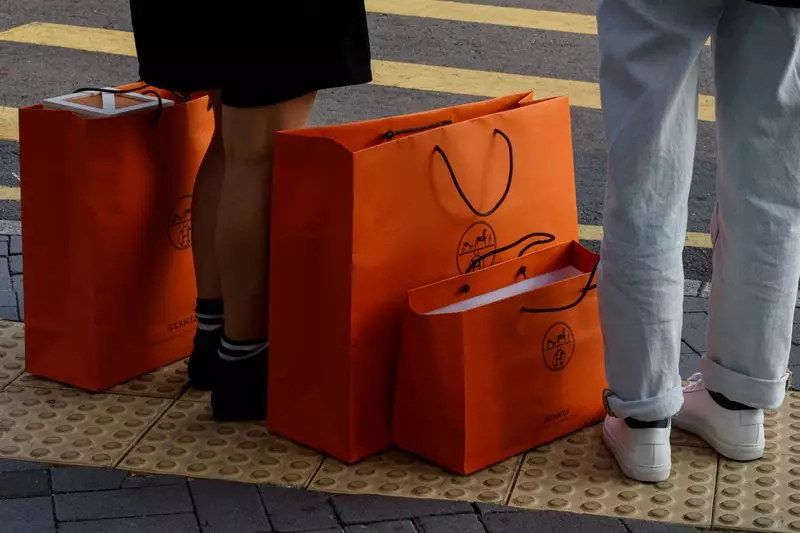The European luxury market, epitomized by renowned brands like Hermès and Dior, stands at a precipice amid escalating trade tensions between China and the European Union (EU). As countries retaliate against one another through tariffs and sanctions, the luxury sector is often caught in the fray. With China accounting for about 25% of the global luxury market—a vital statistic for brands reliant on affluent Chinese consumers—the implications of trade disputes are profound. The stakes are high, not just for the brands but also for the governments involved, each juggling national interests and economic repercussions.
China’s luxury market has blossomed in recent years, driven by a burgeoning middle class eager to indulge in high-end products. This demographic shift has made it essential for luxury companies to maintain a favorable environment within China, suggesting that imposing punitive tariffs on these brands would not only harm individual businesses but also undermine broader economic goals.
The current situation illustrates the delicate balancing act facing both the EU and China. Following the EU’s imposition of tariffs on electric vehicle (EV) imports from China, there are growing fears that Beijing may retaliate by targeting luxury goods. However, experts argue that such an escalation is unlikely. Chief among these analysts is Patrice Nordey, CEO of the Shanghai-based consultancy Trajectry, who questions the rationale behind targeting luxury brands that have benefitted from favorable governmental policies.
Historically, China’s response to trade provocations has been targeted. Recent measures have focused on industries like brandy, pork, and dairy—areas with substantial economic ties to France. The decision to impose anti-dumping tariffs specifically on brandy imports could be more about sending a warning than initiating a full-on trade war, suggesting that luxury brands may be shielded from direct retaliation for the time being.
Several factors contribute to the resilience of luxury brands amid international tensions. Firstly, the significant tax revenues generated from luxury sales are hard to overlook. For China, encouraging domestic consumption of high-end goods is pivotal to its economic strategy. A shift in consumer purchasing behavior, where wealthy individuals opt to shop abroad to avoid inflated prices due to tariffs, is not in the government’s interest. Such movement would dilute potential tax revenues that could otherwise be capitalized on within China’s borders.
Moreover, luxury brands have become an integral part of China’s economic fabric. As pointed out by Jacques Roizen from the Digital Luxury Group, the rise of places like Hainan as duty-free shopping havens reflects a strategic acknowledgment from policymakers. By fostering a robust luxury market domestically, the Chinese government stands to benefit economically, further protecting these companies from retaliatory measures.
The psychological ramifications of any perceived threat to luxury brands cannot be ignored. The immediate market reaction to troubling news from China reveals a volatility that investors closely monitor. The dimming fortunes of companies such as LVMH and Kering, following predictions of worsened trade relations, underscore the fragile nature of stock valuations in this sector. However, this initial response must be seen in context. The underlying strength of the Chinese luxury market, combined with the strategic moves by the government, suggests a possible resilience against prolonged fallout from international disputes.
As analysts like Albert Hu from the China Europe International Business School caution, neither the EU nor China would benefit from a full-scale trade war, which risks economic harm to both entities. It is in their collective interest to pursue avenues of negotiation and compromise.
While the specter of retaliatory tariffs looms large over European luxury brands operating in China, the reality of the situation reflects a nuanced landscape. The macroeconomic benefits of a thriving luxury market align the interests of both the Chinese government and luxury conglomerates. As analysts continue to monitor this volatile dynamic, it becomes increasingly evident that the luxury sector’s resilience will heavily rely on strategic decisions made in the corridors of power in both China and Europe. The coming months will reveal whether diplomacy can prevail over economic discord, ultimately shaping the future of luxury commerce amid a backdrop of complex international relationships.

